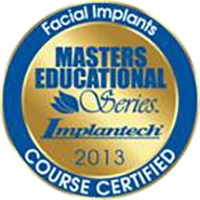What is Cranial, Skull Enhancement Surgery?
Skull Enhancement surgery, or Cranial Enhancement surgery, is a procedure that involves the use of implants to enhance the shape, contour, or size of the skull. The specific benefits of Skull Enhancement surgery can vary based on individual goals and needs. This is a procedure performed on a case-by-case basis and is often custom-designed to fit the individual’s needs and targeted concerns. Dr Shahin Javaheri uses 3D and CT scan imaging frequently to identify the deficiency and customize implants accordingly. Here are some potential outcomes and benefits of Skull (skull) Enhancement surgery:
1. Aesthetic Enhancement Surgery:
- Improved Symmetry: Skull Enhancement surgery can address asymmetry or irregularities in the shape of the skull, creating a more symmetrical and aesthetically pleasing appearance.
- Head Contouring: The procedure can be used to achieve a desired head shape, addressing concerns about a flat or overly rounded skull.
2. Correction of Deformities:
- Post-Traumatic Reconstruction: Individuals who have experienced trauma resulting in skull deformities or asymmetry can undergo Skull Enhancement surgery to correct and reconstruct the affected areas.
- Post-Surgical Correction: Patients who have undergone previous surgeries that have altered the shape of the skull may opt for Skull implants to address resulting irregularities.
- “pin head” & “pointy-head can also be surgically corrected to help achieve more balance.
3. Enhancement surgery of Facial Harmony:
- Improved Facial Proportions: Skull Enhancement surgery can contribute to better overall facial harmony by creating a balance between the skull and other facial features.
4. Reconstructive Purposes:
- Correction of Birth Defects: In cases of congenital conditions affecting skull development, Skull Enhancement surgery can be part of a reconstructive strategy to address the underlying issues.
5. Psychosocial Benefits:
- Increased Confidence: For individuals who are dissatisfied with the natural shape of their head, skull Enhancement surgery can lead to increased self-confidence and a positive self-image.
6. Customization:
- Tailored Solutions: Skull Enhancement surgery procedures are highly customizable, allowing surgeons to tailor the implants to the specific needs and goals of the individual.
7. Minimally Invasive Options:
- Minimally Invasive Techniques: Some Skull Enhancement surgery procedures may be performed using minimally invasive techniques, resulting in shorter recovery times and reduced scarring.
It’s important to note that the decision to undergo Skull Enhancement surgery should be based on individual considerations and preferences. Before proceeding with any cosmetic or reconstructive surgery, individuals should consult with a qualified and experienced plastic or craniofacial surgeon. Dr Shahin Javaheri will assess the individual’s specific needs, discuss expectations, and provide information about the potential risks and benefits of the procedure.
A consultation for Skull Enhancement surgery, like any cosmetic or reconstructive surgery, is a crucial step in the process. The consultation provides an opportunity for the individual to discuss their goals, concerns, and expectations with Dr Javaheri. Here’s what is typically involved in a consultation for Skull Enhancement surgery:
1. Initial Assessment:
- Dr Javaheri will initially assess the individual’s overall health and medical history. This includes discussing any pre-existing medical conditions, previous surgeries, medications, and allergies.
2. Patient Goals and Expectations:
- The individual will have the opportunity to express their goals and expectations for Skull Enhancement surgery. This includes discussing specific concerns about the shape, contour, or size of the skull.
3. Examination:
- Dr Javaheri will perform a physical examination, assessing the current shape and structure of the skull. Measurements may be taken to help plan the Enhancement surgery procedure.
4. Review of Options:
- Dr Javaheri will discuss the available options for Skull Enhancement surgery, including different types of implants, surgical techniques, and potential outcomes. They may also show before-and-after photos of previous patients who underwent similar procedures.
5. Risks and Benefits:
- Dr Javaheri will explain the potential risks and complications associated with Skull Enhancement surgery. This includes information about anesthesia, infection, implant complications, and the recovery process.
6. Procedure Details:
- Detailed information about the surgical procedure will be provided, including the type of anesthesia used, the location of incisions, and the placement of implants.
7. Recovery and Downtime:
- Dr Javaheri will discuss the expected recovery process, including the duration of downtime, any restrictions on activities, and post-operative care instructions.
8. Cost and Financing:
- The financial aspects of the procedure, including the cost of surgery, facility fees, anesthesia fees, and any other associated costs, will be discussed. Information about potential financing options may also be provided.
9. Questions and Clarifications:
- The individual is encouraged to ask any questions and seek clarifications about the procedure, recovery, and expected outcomes.
10. Decision-Making:
- After receiving all the necessary information, the individual can make an informed decision about whether to proceed with Skull Enhancement surgery. Surgeons often encourage patients to take time to consider their options before planning.
It’s important to choose a qualified and experienced surgeon for Skull Enhancement surgery, as consultation is an opportunity to establish a rapport and ensure clear communication. Individuals should feel comfortable asking questions and expressing their concerns during this process. Additionally, the consultation is also a time for Dr Javaheri to assess the patient’s suitability for the procedure and determine realistic expectations based on the individual’s anatomy and medical history. 3D and CT scan imaging is frequently used to identify the deficiency. Custom treatment options are created to fit the patient’s desired profile.
Start of facial/cranial implants What Dr. Javaheri does with facial and, or cranial implants, can be described as transformative. Some of these procedures are for those who want to make a change in their facial features. Some of these individuals are those who were unfortunate recipients of birth defects, such as craniosynostosis, trauma, or those who want to make changes in the dimensions of the various parts of their face, either because there are uneven areas, or because an individual wants to make that transformative change. The surgical procedure (s) may be performed in one operation or may require a staged approach. This will depend on the patient’s desire or the complexity of the procedure. In any case, Dr. Javaheri has a combination of unique talent, expertise, experience, an eye for art, and exceptional technical skills.





